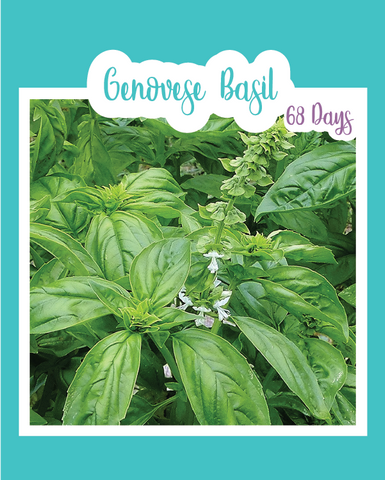
Catnip
Seed Count: Approx. 200 seeds
Days to Maturity: 85 days
Description: Catnip is a hardy perennial in the mint family that is native to Africa, Asia, and Europe. It is close cousins with other popular garden herbs, such as basil and oregano. It spreads quite rapidly, and produces cute lavender colored flowers. It's extremely ornamental, and can be used in your garden landscaping. Not only is it lovely to look at, but the grey-green leaves have a pleasant lemon mint taste as well. Catnip can grow quite tall, up to 3 ft., so I like to use it as a backdrop for smaller flower varieties. If you didn't know, catnip gets its name from the intense reaction that about 2/3 of cats have towards this plant. It's definitely a fun recreational treat for your furry friend, and all three of my cats love the stuff. If sniffed, they tend to go a bit nuts, but if eaten, it works well as a sedative for them. It's not only great for cats though. It's commonly used in herbal teas, and works great as a sedative for humans as well, since it has similar properties to chamomile. Even the bees love this plant. They are very attracted to it's cute lavender flowers, which makes it perfect to add to your pollinator garden. While it attracts beneficial insects to your garden, it works to repel bad ones like, aphids, cabbage loopers, and ants. In general, catnip is pretty effortless and easy to grow, so you shouldn't have any issues getting it to thrive. Plus, it makes a great mosquito repellent!
Mint2Grow Tip: Catnip is great to make your own sleepy time tea mix with. I like to make a mixture of catnip, sweet basil, lemon grass, peppermint, passion fruit flowers, sour sop leaves, and lemon leaves. This tea is great at relieving you from the cold or flu, headaches, or insomnia.How To Grow
Sowing: You should start your Catnip seeds 4-8 weeks before your last spring frost. Sow your seeds just below the surface of the soil. Be careful not to sow them too deeply. Keep the soil moist, and the temperature around 70 degrees, and provide at least 6 hours of sunlight a day. Your seedlings should emerge in 14-21 days. Transplant your plants in an area with full sun, or light shade, as soon as they grow big enough to handle or when frost is no longer a threat. Make sure to harden off your seedlings first! When planting, space your seedlings about 18 inches apart. You can also sow your seeds directly in the garden. Once established, catnip thrives effortlessly. As a companion plant, Catnip repels bugs like aphids, flea beetles, Colorado potato beetles, cabbage loopers, ants, roaches, and squash bugs. It's great to plant with cabbages and other members of the brassica family, beets, pumpkins, squash, and potatoes. This herb also grows great as a container plant, and is perfect for small patio or kitchen gardens.
Growing: Catnip requires about 1 inch of water per week. You should water your plants early in the morning, in order to prevent diseases. If you are going through a dry spell, it is important to keep your plants watered. However, once established, I found that they handled drought, and my laziness, pretty well. Mulching your plants can help conserve its moisture and keep weeds from taking over. Weeds compete for nutrients, space, and water so it is important to keep them minimized. For bushier plants, make sure to pinch off the tops so it spreads wide instead of just tall.
Harvesting: Fresh leaves can be harvested as soon as the plant reaches 8 inches in height. The best time for harvesting Catnip is in the morning, after the dew has dried. You can harvest entire stalks by cutting them and leaving at least 1 inch above the ground to allow for new growth. Just make sure to harvest the leaves before they turn yellow. Fresh leaves can be kept in the refrigerator for a couple days, but they can also be dried. Use leaves in tea, salads, or in your cooking to flavor your food. To save seeds, allow for your plant to flower and go to seed. Then harvest seed heads, individually, as soon as they begin to turn brown and dry. If you allow them to dry in the garden, they will burst and reseed themselves. Spread seed heads out to finish drying, in a protected location, away from direct sunlight. Once dried, thresh out your seeds by rubbing or shaking the heads, and remove as much chaff as possible. You can store your seeds in a cool, dry place for up to 1 year.




